Fix External Hard Drive Not Showing Up or Recognized on Windows 10 & 11 in 2025
An external hard drive not showing up is a common issue on Windows 10/11, and this article will explore the different solutions. Keep reading to see what causes this issue and learn how to troubleshoot and fix it.
If you use external storage frequently, you may find that your Windows 10/11 computer doesn’t read or recognize an external drive. You shouldn’t be too worried if you encounter this, as it’s a common problem. This article will explore the different approaches you can use to fix an external hard drive not showing up.
Even though most modern computers have lots of internal storage, you may need an external hard drive. For instance, photographers and artists deal with large uncompressed files that can quickly fill up a hard drive. If you haven’t used one of the best backup solutions for external hard drives, experiencing this error can be disastrous — but chances are you can fix the problem without losing your data.
-
02/21/2024 Facts checked
Article rewritten with new instructions for Windows 10 and 11.
Why Is My External Hard Drive Not Showing Up?
An external drive may fail to show up on your PC due to small issues, like outdated Windows drivers and defective ports, or even complicated ones such as damaged drives.
We can summarize these issues as follows:
| Outdated or Incompatible Drivers | Your computer might have drivers that are outdated or incompatible with the external hard drive. |
| Unsupported Driver File System | Your Windows machine may fail to read incompatible file systems (like APFS) from operating systems such as Ubuntu or macOS. |
| Corrupted Drive | Your external hard drive might be infected with malware that corrupt the content. |
| Insufficient Power | Some external drives require a dedicated power source. |
| Faulty Hardware | The port connecting your computer to the external hard drive might be faulty. |
| USB Port or Hub Issues | The cable you use to connect the hard drive to the computer might be faulty. |
| Physically Damaged Disk | You might have a dead drive if it fell on a hard surface or was exposed to excessive heat. |
How to Fix an External Drive That Isn’t Showing Up in Windows 10 or 11
Different approaches exist when you want to fix an external hard drive not showing up on your computer. Sometimes, it might be a simple one-step solution like using a different USB port. In other cases, you may need to combine two or more steps to fix the issue. These are some of the most common problems and solutions.
Update Your Drivers
Your Windows machine might not be detecting the external hard drive due to driver issues. You can update them with the following steps:
- Open the Device Manager
Hit the “Windows” key and search for the “device manager” tool. Here you’ll see all the devices and components that are connected to your computer.
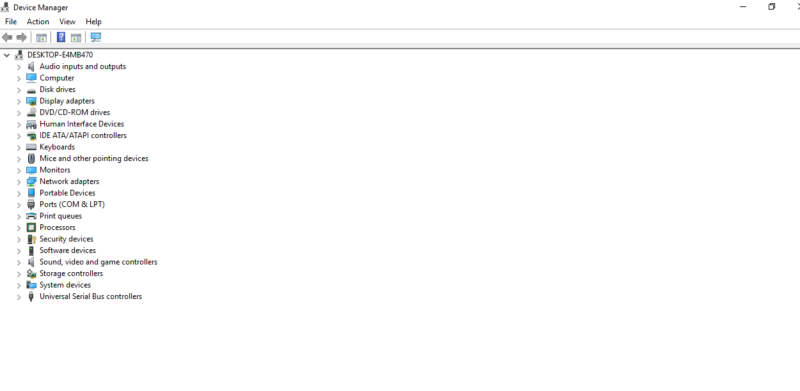
- Open Disk Drives
Locate the “disk drives” section and double-click it to open the available disks.
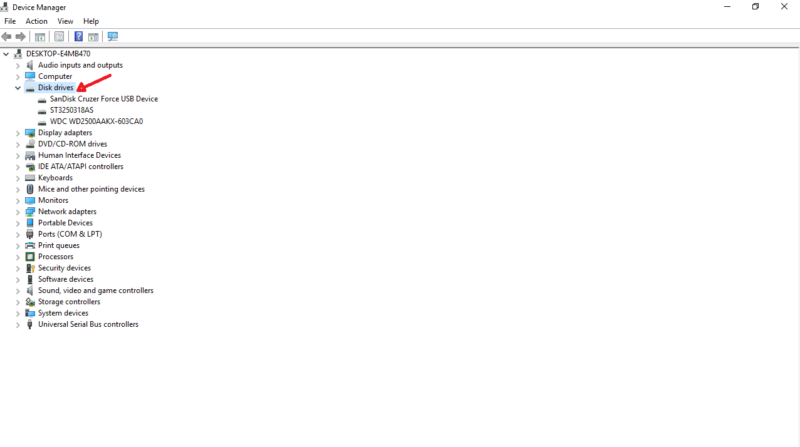
- Update Drivers
Locate the hard drive you want to update, right-click on it and select “update driver.” For the purposes of this demonstration, we’ll target the first drive. You’ll be given the option to search for new drivers online or manually select them from your computer. Click on “search automatically for updated driver software.”
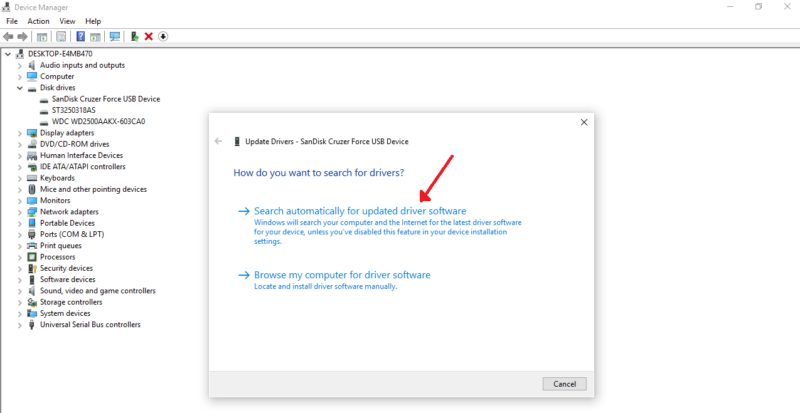
- Confirm Updates
If the driver tab wizard finds new drivers online, it will recommend downloading them. Update them to sort the driver issues and then confirm whether you can see the hard drive on your Windows computer.
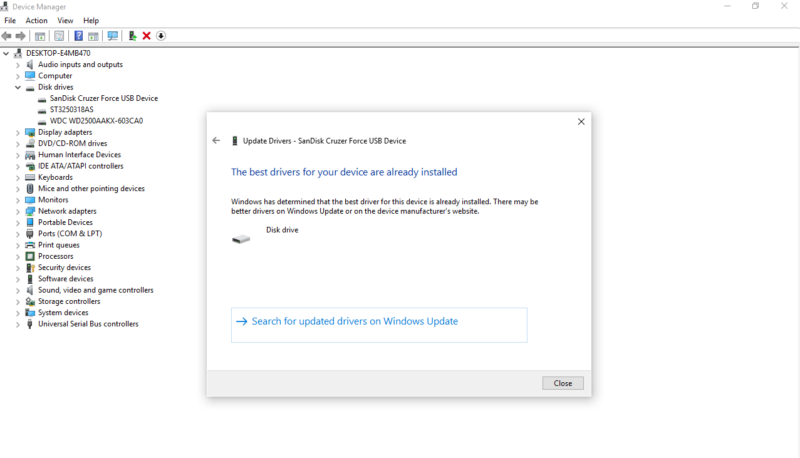
Check Your Ports and Power Supply
Your computer may have a defective USB port. You can check if a USB port on your machine is defective by switching from one port to another. If the drive is readable on a different USB port, you’ll know that the former is defective.
If your external hard drive has a power button or needs an external power source, check that it’s plugged in, turned on and indicating that it’s receiving power.
Use the Windows Diagnostic Tool
The Windows operating system comes with troubleshooting tools for solving different issues. These tools can help you diagnose hardware and software issues.
You can use the Windows “disk management” diagnostic tool to manage partitions on your computer. This troubleshooter can help fix issues, such as an external hard drive not appearing on a Windows computer. Follow these steps.
- Open the Dialog Window
Press the “Windows“ and “R“ keys at the same time to open the “run” dialog window. Type “msdt.exe -id DeviceDiagnostic” and click “OK” or press the “enter” key.
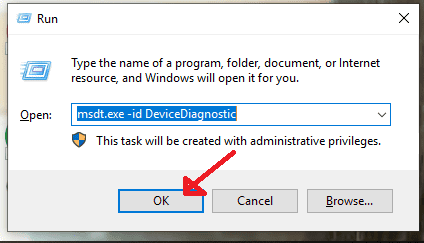
- Press “Next” on the Dialog Box
The computer will ask if you want to troubleshoot the hardware and devices that are connected. Click the “next” button.

- Fix Problems
The troubleshooter will run a diagnostic test of your machine and any connected drives to check for problems. It will run for a few seconds and display any issues that it can find with your drives.
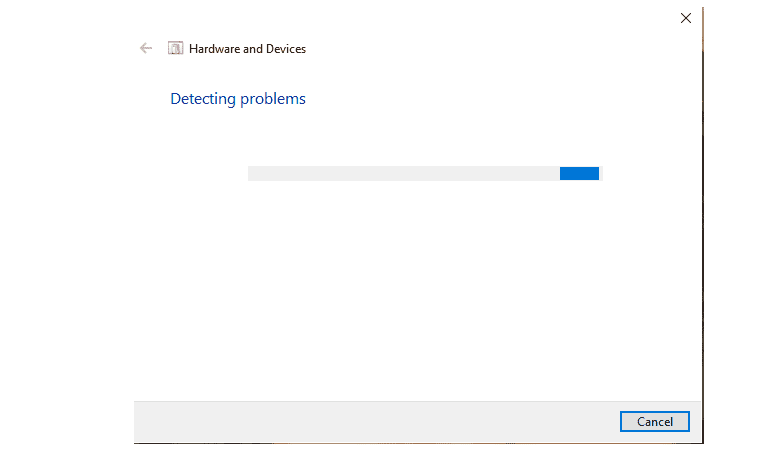
Add or Change the Drive Letter
Windows identifies the various drives in your computer using letters. By default, the partition carrying the operating system is labeled C. Your computer might have one partition or several, depending on your needs.
When you mount an external hard drive, it will appear alongside other partitions of your internal hard drive. However, if your external hard drive’s letter conflicts with that of another computer drive, the external drive won’t appear on the File Explorer. Instead, it will show up as a “new volume” in the disk management space.
Normally, your computer assigns a letter to all of its internal drives by default. Thus, if the system somehow assigned your external hard drive with a similar drive letter, you can make the external drive discoverable by giving it a new one.
- Access the Disk Manager
Right-click the “start” button on the Windows taskbar. Select “disk management” to see an overview of your drives and partitions. Your drives might have letters that differ from what you see here.
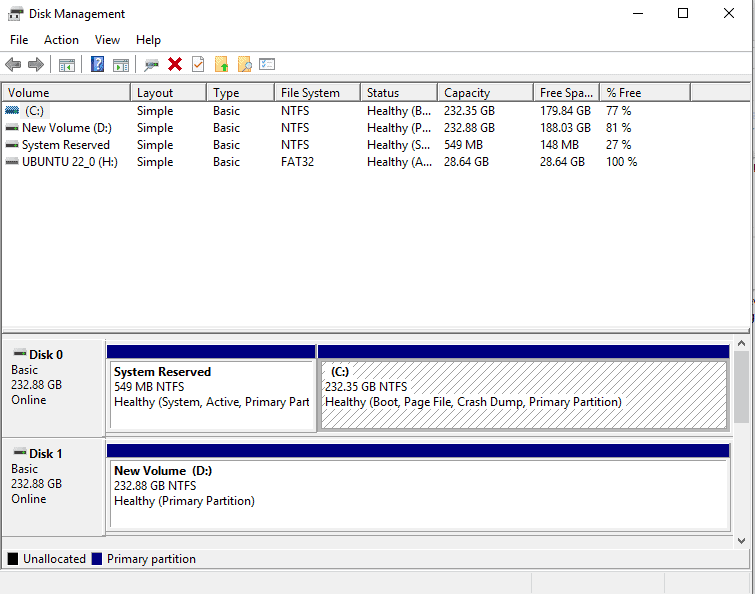
- Access Drive Letter and Paths
Select the drive you want to rename, right-click it and select “change drive letter and paths.” The target disk in this demonstration is drive H.
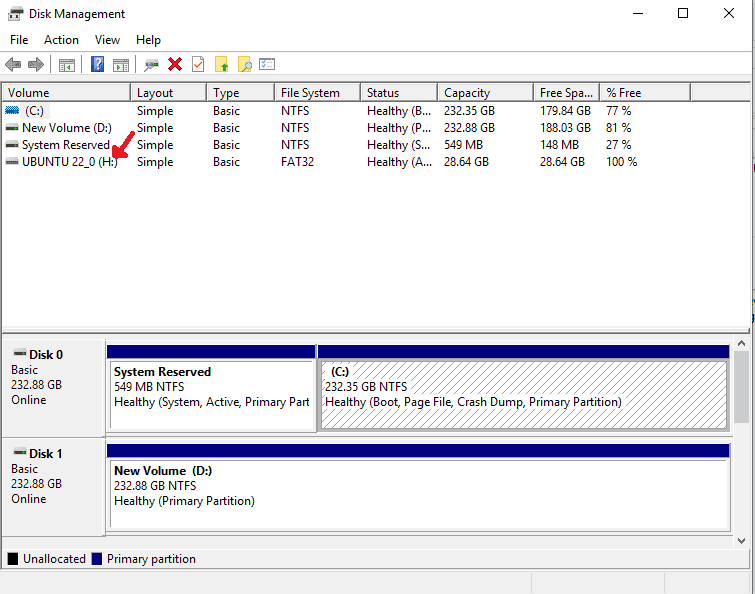
- Change Drive Letter and Paths
You can either add or change the existing drive letter. The first option will work if your disk doesn’t have a name. You can also change the drive letter just in case the problem stems from a conflict with another drive or partition.
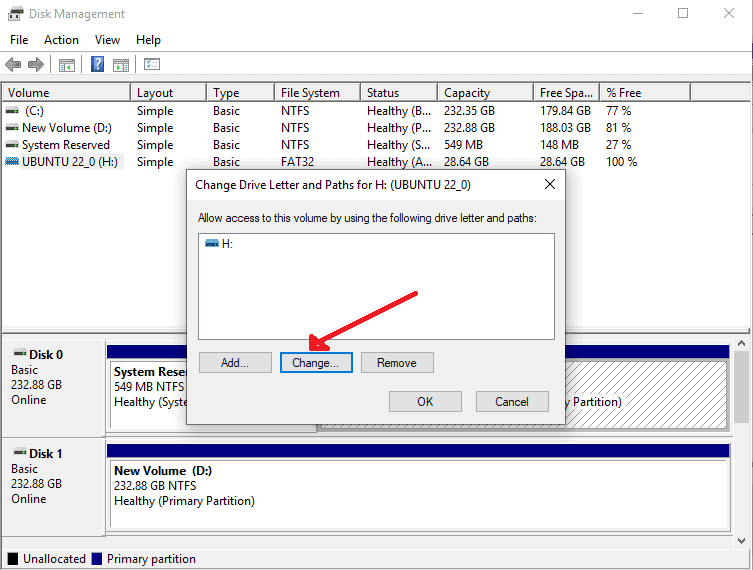
- Save Changes
Select “assign the following drive letter” and choose a letter for your drive from the dropdown menu.
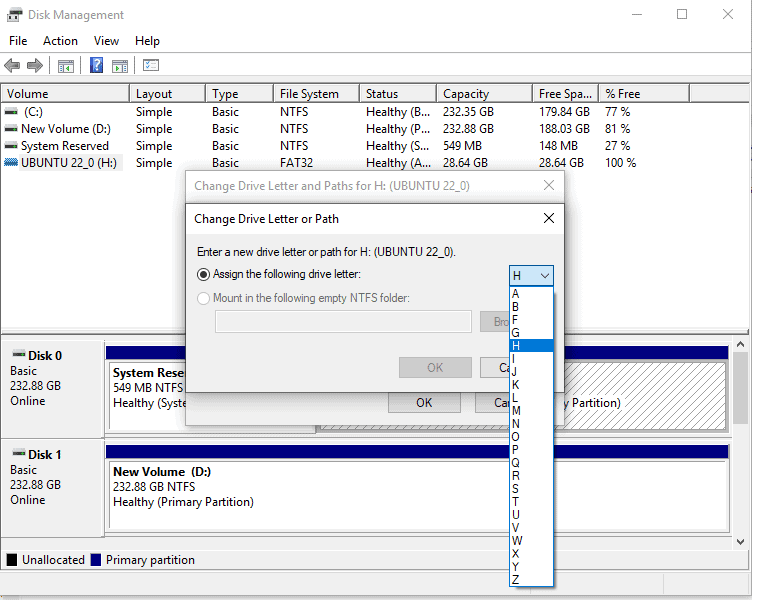
Initialize the Hard Drive in the Device Manager
Your Windows 10/11 computer might fail to recognize a new hard drive because it’s not initialized. However, you can only initialize a disk that isn’t formatted yet.
If your disk already contains some useful files, don’t initialize it, as you will lose all of them. If you already have files, the best approach is to troubleshoot the issue. Initializing the disk prepares it for use by Windows so that you can format and store files in it. You can use the steps below to initialize it.
- Open Disk Management
Right-click the “Windows” or “start” icon on your computer and search for “disk management.” You will see all the drives (both internal and external) listed here.
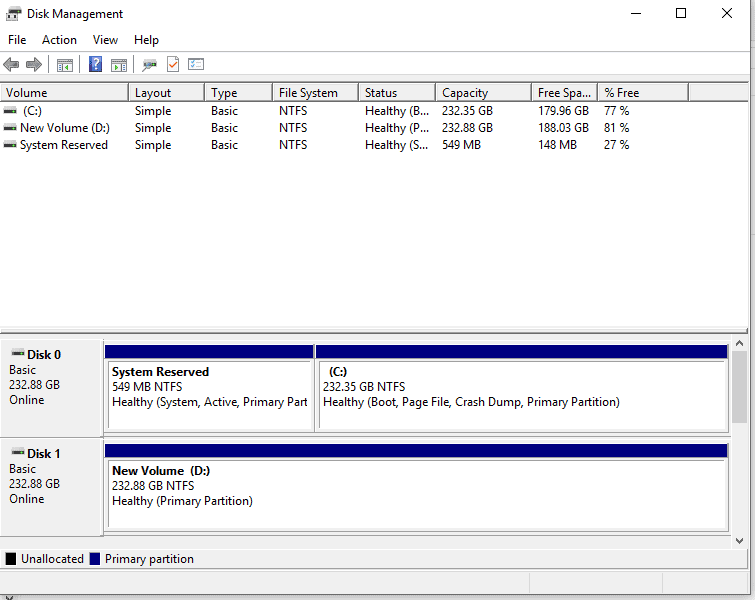
- Initialize the Drive
Right-click on the target drive and click “initialize disk.” If the disk is listed as “offline,” first right-click on it and select “online.” Follow the prompts on the “initialize disk” dialog box and select your partitioning style as either GPT or MBR.
However, some USB drives don’t have the initialize option. If that’s the case with your drive, the only option left is formatting and assigning the drive with a new letter.
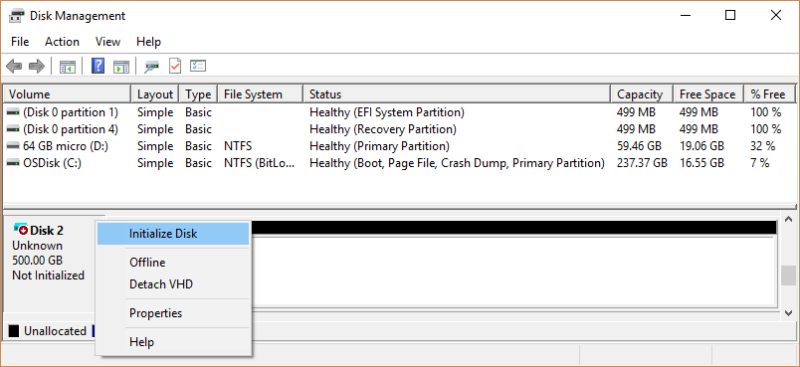
Uninstall & Reinstall the Hard Drive in the Device Manager
Although the first step was updating the drivers, sometimes Windows can’t find any new drivers to download, or the old driver gets in the way. To solve this, you can uninstall and reinstall the hard drive. Use these steps to uninstall and reinstall the hard drive.
- Open the Device Manager
Right-click the “Windows” icon on your computer and click on “device manager.” Scroll down to “disk drives” and click the expand button to list all the drives.
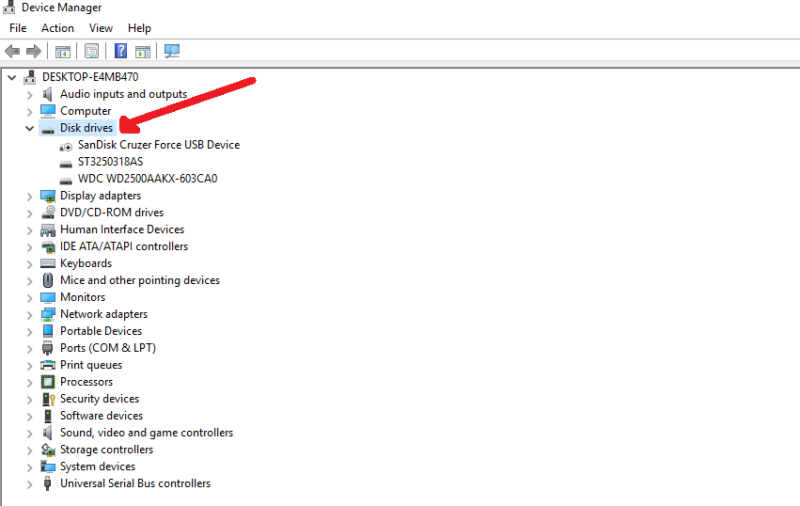
- Uninstall the Hard Drive, then Reinsert
Right-click the target drive and select “uninstall device.” You will get a warning. Click “uninstall” and let the process finish. Remove and reinsert the hard drive. In most cases, your computer will install the external drive automatically. If not, you can follow the installation wizard that appears on your screen. You can now remove and reinsert the drive to your computer’s hard drive port. A Windows computer will automatically reinstall most external hard drive models the moment you connect it.
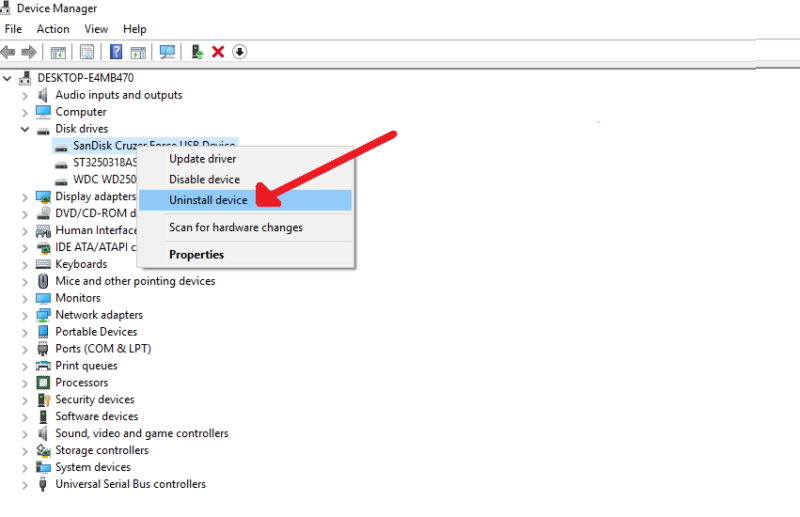
How to Format an External Hard Drive That is Not Visible
If none of these approaches worked, the only remaining option is to format the external disk. However, you must be aware that formatting erases all the data on your disk and restores it to its original state.
You can use the approach explained above to access the external hard drive through the “disk management” function by right-clicking the drive and selecting “format.” Alternatively, you can use third-party tools to format the external drive.
External Hard Drive Data Recovery
If you tried all these options and none worked, the only path left is to try to recover any data that might still be on it. You have nothing to worry about if it’s a new drive, as it has no data.
If the drive contains important data, you can try using data recovery software. Different data recovery tools exist, but there’s no guarantee that you’ll recover all or even any of your files. Backing up your external hard drive online is the safest way to ensure that your data is always safe, so check out how to back up external hard drives for the future.
Final Thoughts: External Drive Not Showing Up Fixed
There are different approaches to fixing an external hard drive not showing up in Windows. You can start with easy ones, like changing the USB hub or updating the drivers. Then you can move on to more complicated methods, such as changing the drive letter or reinstalling the external drive entirely. Worst-case scenario, you can try reformatting the drive or using data recovery software to salvage whatever is left.
While backing up using an external hard drive is a reliable method to archive files, photos and videos, but keeping an extra backup using a cloud solution or a hybrid service can provide an additional layer of protection and security. To understand their differences further, read our cloud storage vs external hard drive guide.
Was your problem fixed? Which solution works for you? Let us know what works in the comments, or highlight a solution we may have missed in this article. Thank you for reading.
FAQ: External Drive Not Detected
Your Windows computer might fail to detect an external hard drive due to small issues, like a defective USB port, or more serious ones, like a damaged hard drive.
The solution to an external hard drive not appearing will depend on the cause. For instance, if it’s a new drive, initializing it from the “disk management” tool might solve the issue.
The best approach to completely reset the external hard drive is by formatting it. However, ensure that you back up your data beforehand as formatting erases everything and returns the drive to its factory settings.


